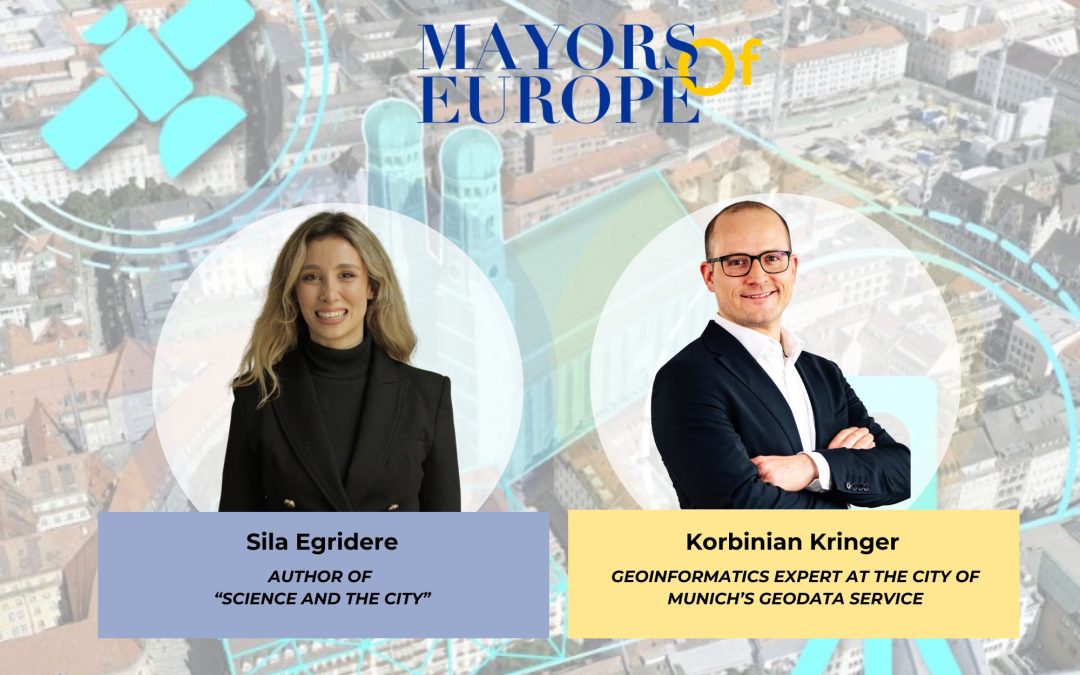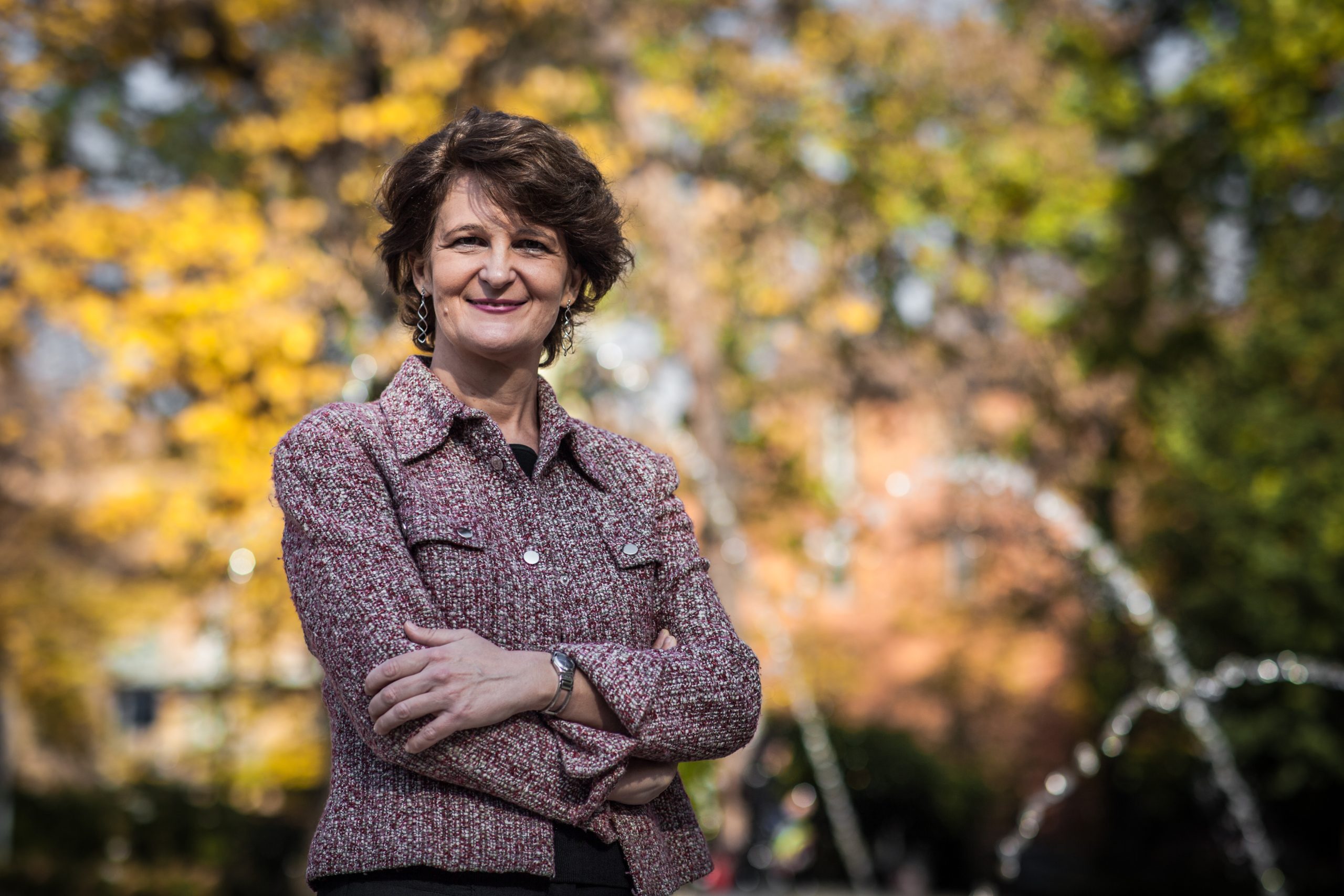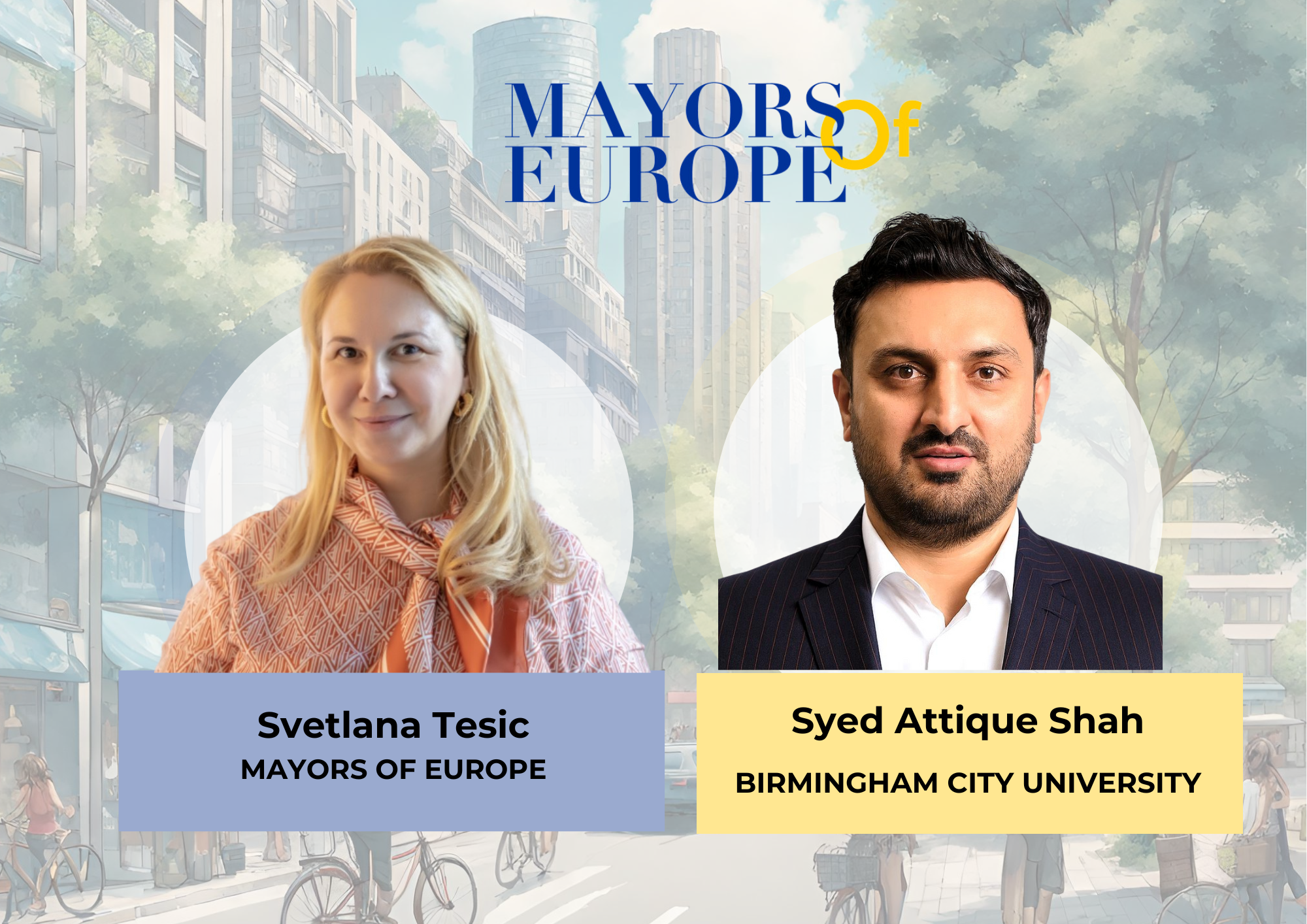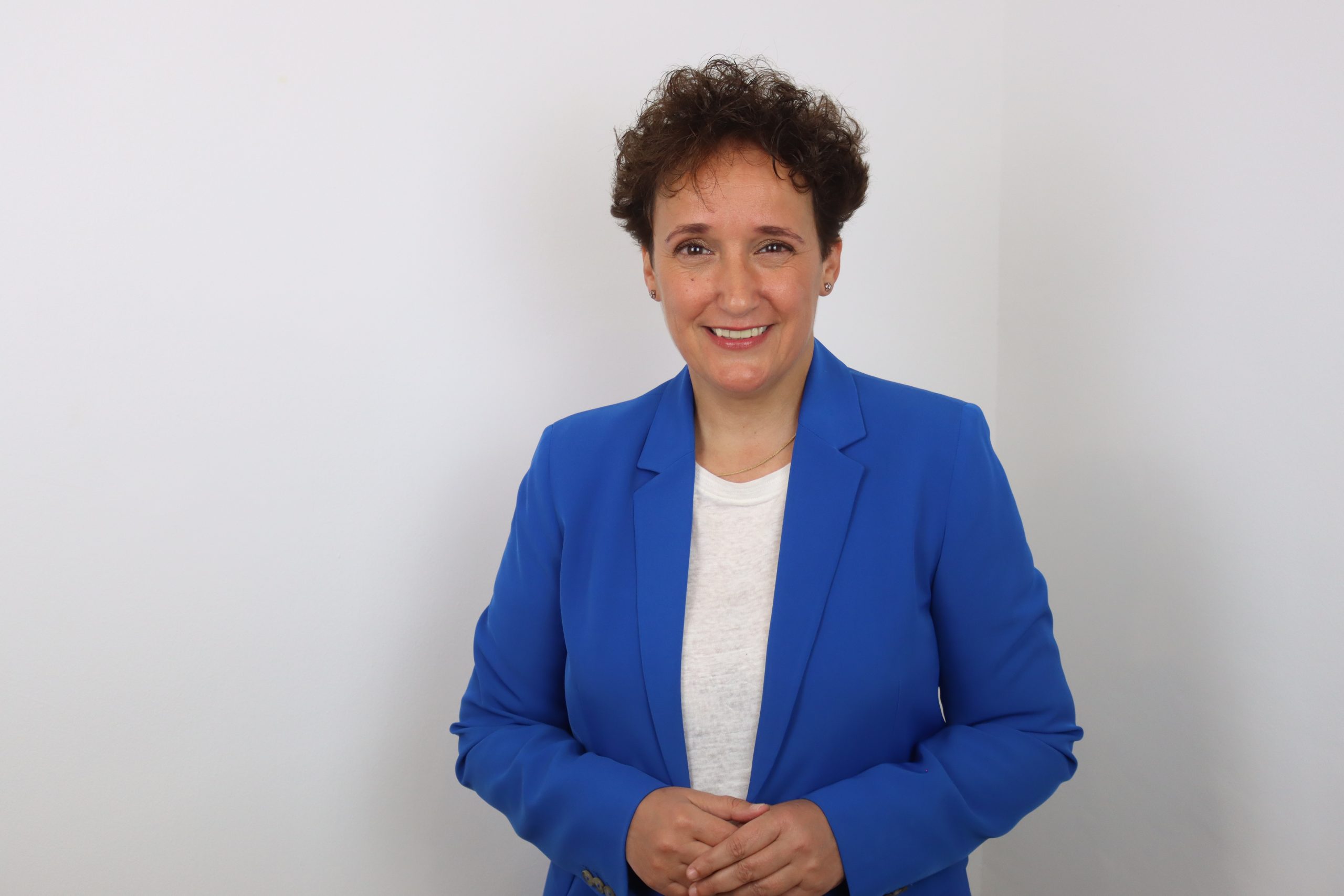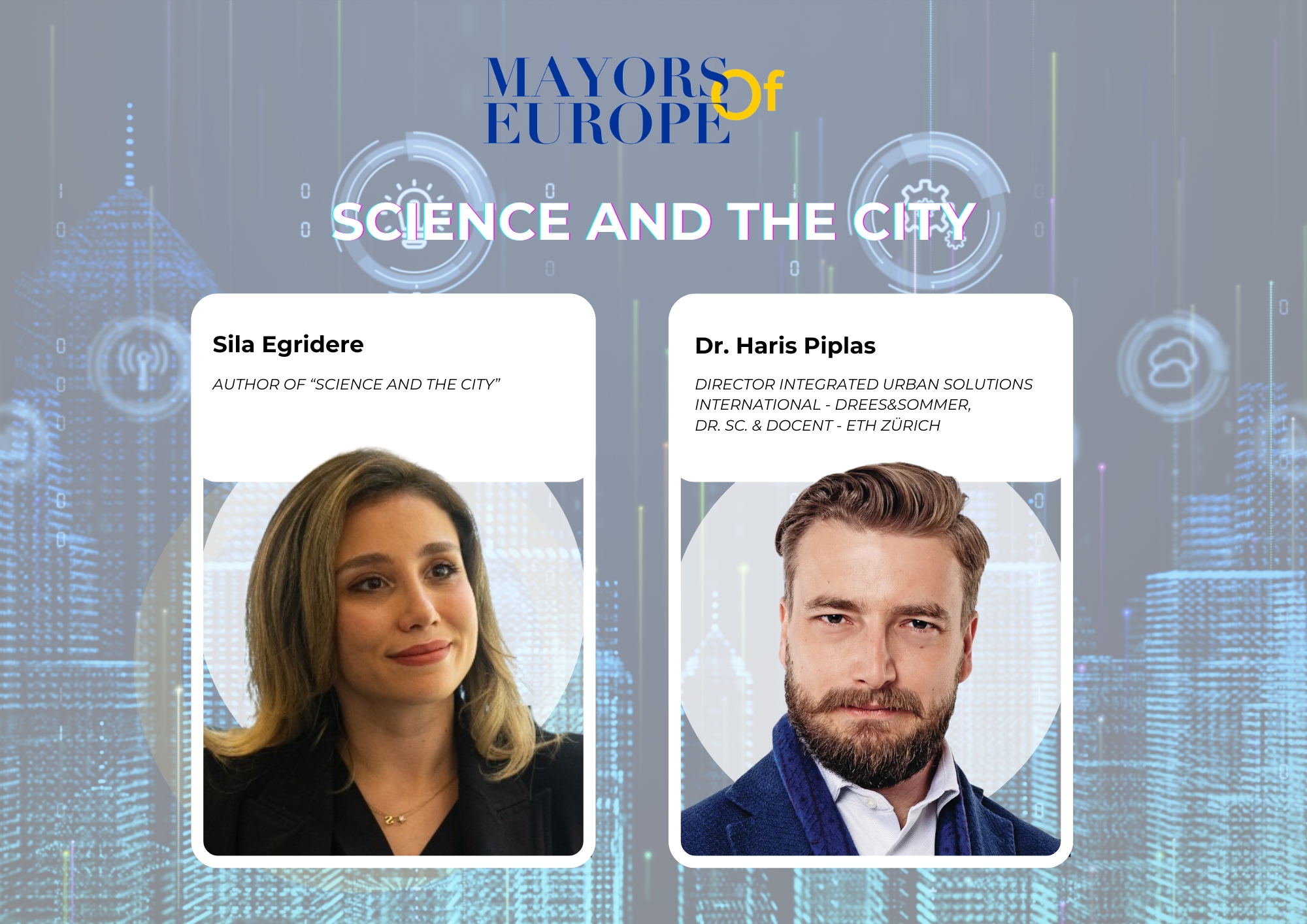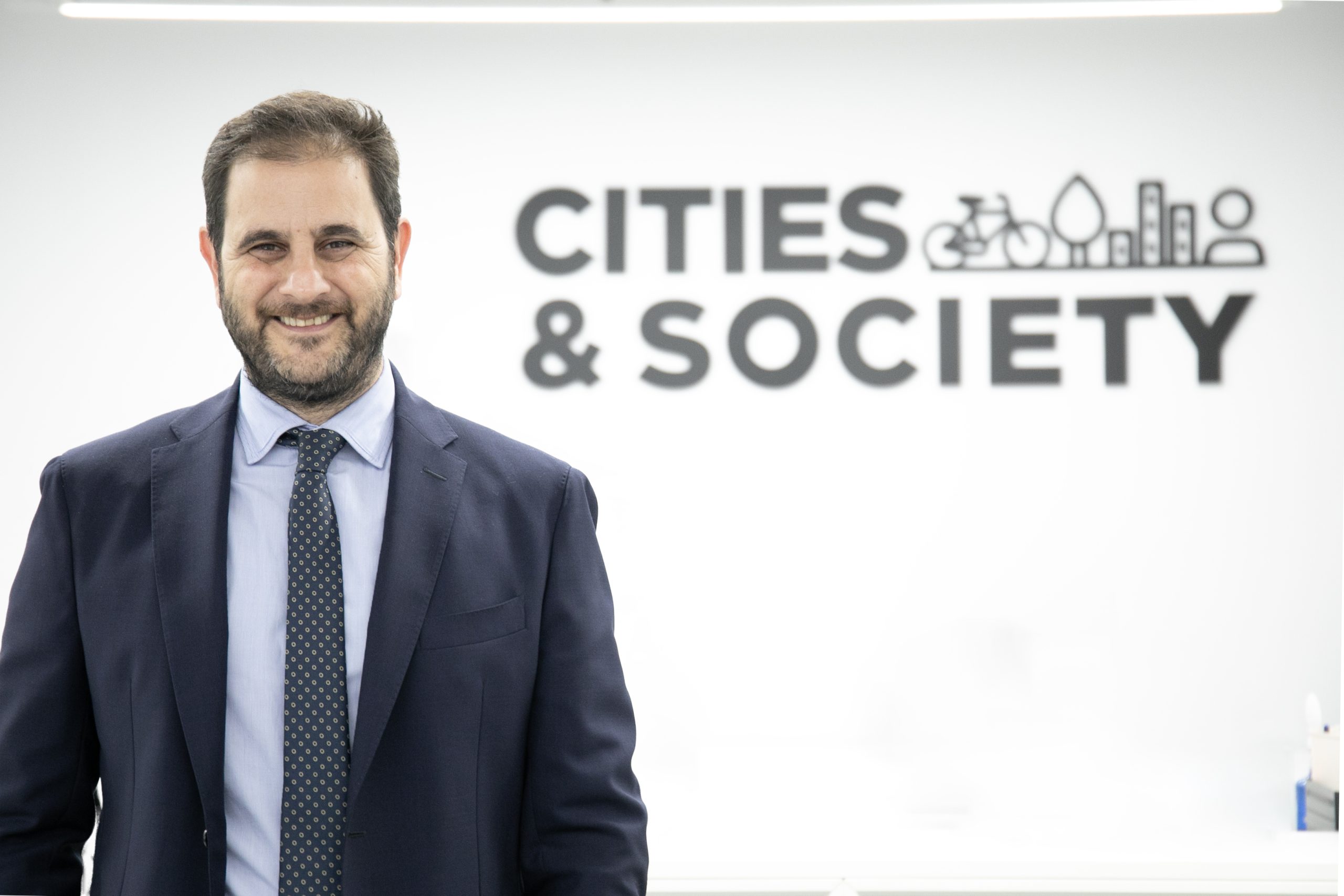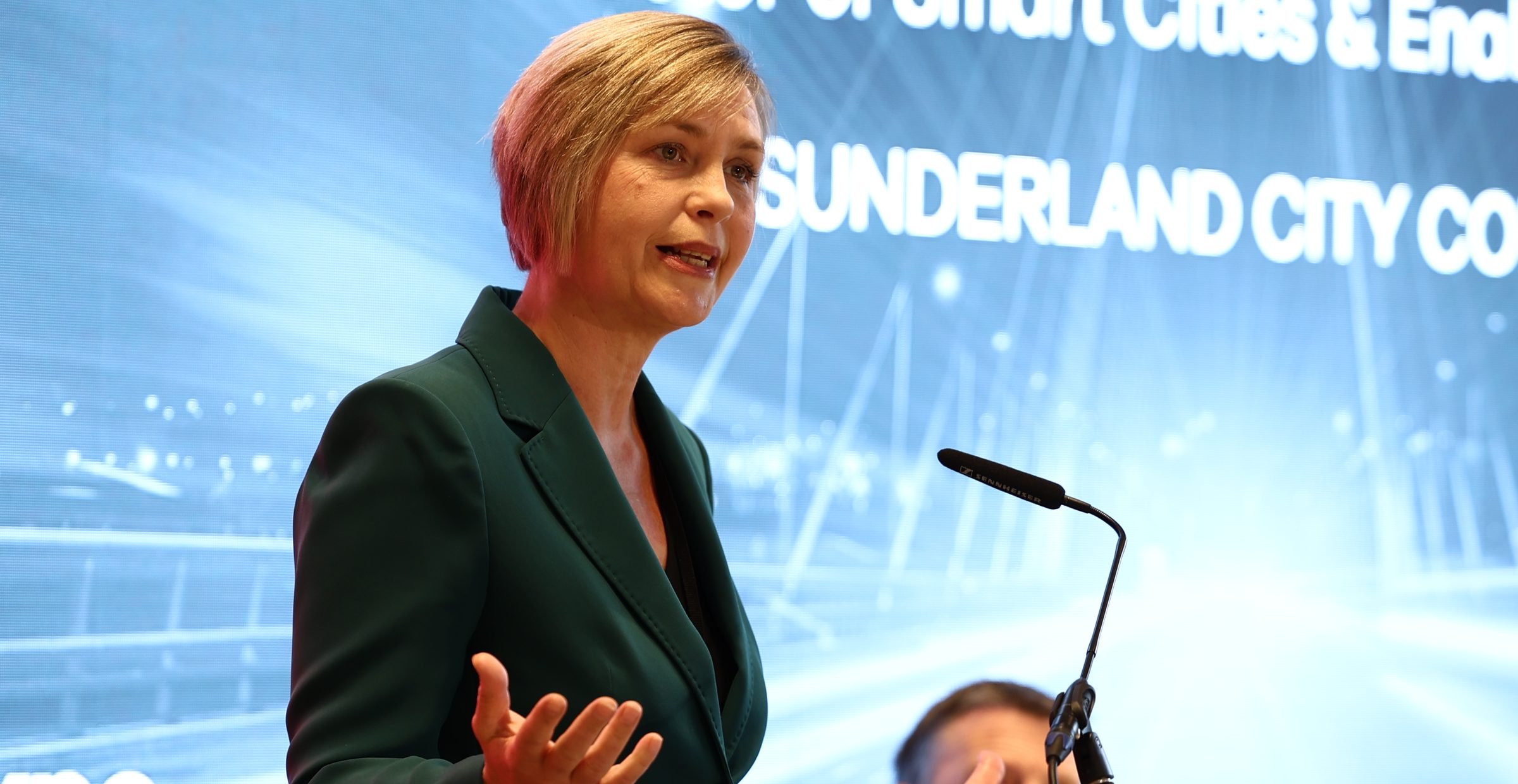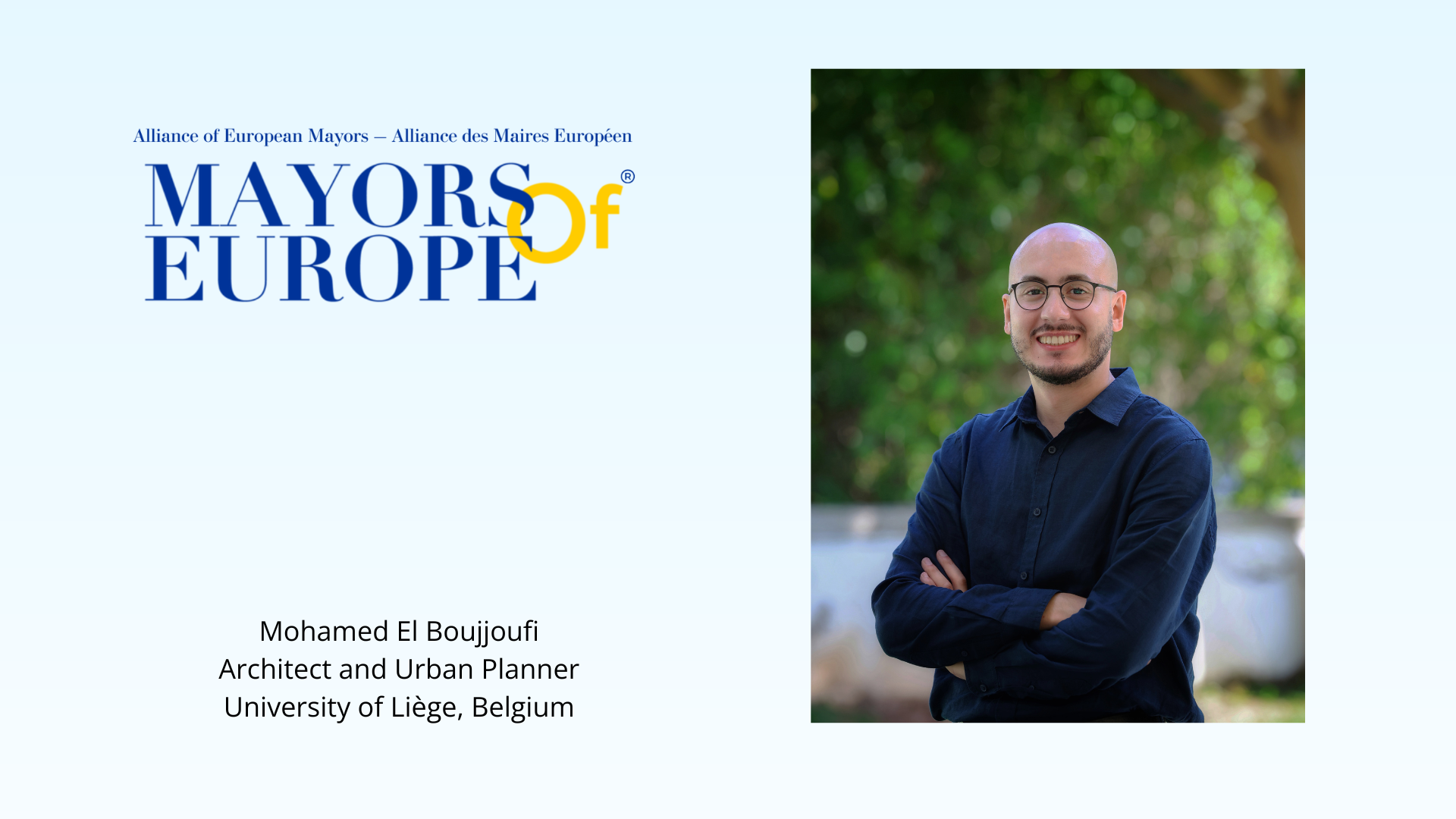Building Smarter: How Munich Uses Digital Twins to Rethink the City
by Sila Egridere, Architect and Smart City Expert
From Uncertainty to Understanding: My Journey into Digital Twins and Beyond
When I first came across the concept of digital twins during my master’s studies, I was captivated – but also deeply overwhelmed. The idea of creating a digital replica of an entire city felt like something out of science fiction. I couldn’t wrap my head around how anyone could possibly mirror the chaotic, ever-changing nature of the built environment. The sheer amount of data collection, the coordination between departments, the technical infrastructure – it all seemed out of reach.
That’s why my conversation with Korbinian Kringer, from the City of Munich’s Geodata Service, became a turning point. For the first time, I saw how this concept actually works – not in theory, but in practice. It wasn’t about building something massive and perfect from the start. It was about starting with real needs, collaborating across teams, and using data as a tool for clarity, not complexity. It made sense.
So, what is a digital twin, really?
At its core, a digital twin is a real-time, data-driven virtual model of a physical object, system, or space. In urban contexts, it allows planners, designers, and decision-makers to simulate change before it happens. They can test different planning scenarios, monitor how systems behave, and communicate their vision in ways that are far more visual and interactive than traditional methods ever allowed.
Cities today are under pressure – from climate change, demographic shifts, infrastructure strain, and the urgent need for more inclusive and sustainable urban environments. In this landscape, digital twins are not just a technological innovation – they are an essential planning tool.
But this shift is not happening in isolation.
The Metaverse: A Glimpse into What Comes Next
Alongside the rise of digital twins, another idea is gaining traction: the metaverse. Often reduced to entertainment headlines, the metaverse is actually a broader concept – an immersive digital environment where people, data, and design can interact in real time. When digital twins and metaverse technologies intersect, something powerful happens. Cities don’t just model changes – they let people experience them. Imagine walking through your future neighborhood, attending a digital public consultation, or testing how a proposed development would feel – before anything is built.
Startups like BizzTech are already exploring this frontier. By creating multi-user, 3D metaverse environments, they open up possibilities for urban demonstration spaces, innovation labs, and participatory design. While their work isn’t focused solely on digital twins, it hints at a near future where virtual collaboration, immersive planning, and real-time spatial data all converge. With that in mind – and hoping to see digital twins and metaverse platforms evolve together in the near future – let’s turn to what’s already happening today: Munich’s Digital Twin Project.
Digital Twin Munich: How Data-Driven Urban Planning is Reshaping the City
What if we could test future urban changes before making them real—simulate the impact of redesigning a square or removing a street lane, and show it to citizens in 3D before a single brick is moved? This is not science fiction. It’s happening in Munich.
To explore how, I interviewed Korbinian Kringer, a geoinformatics expert at the City of Munich’s Geodata Service. Kringer is part of the city’s Competence Center for Digital Twins and plays a key role in coordinating spatial data and digital infrastructure across departments. His insights reveal not only the technical foundations of Munich’s digital twin project, but also the strategic thinking behind its real-world impact.
A City’s Vision in 3D
At the core of Munich’s digital transformation lies its digital twin project – a collaborative, cross departmental
initiative involving IT, mobility, and urban planning units. Using simulations and “what-if” models, the digital twin enables data-driven decision-making on everything from air quality to traffic flow and green space preservation.
It also serves as a powerful communication tool. Through interactive 3D models, both policymakers and citizens can visualize proposed changes bridging the gap between planning intentions and public understanding.
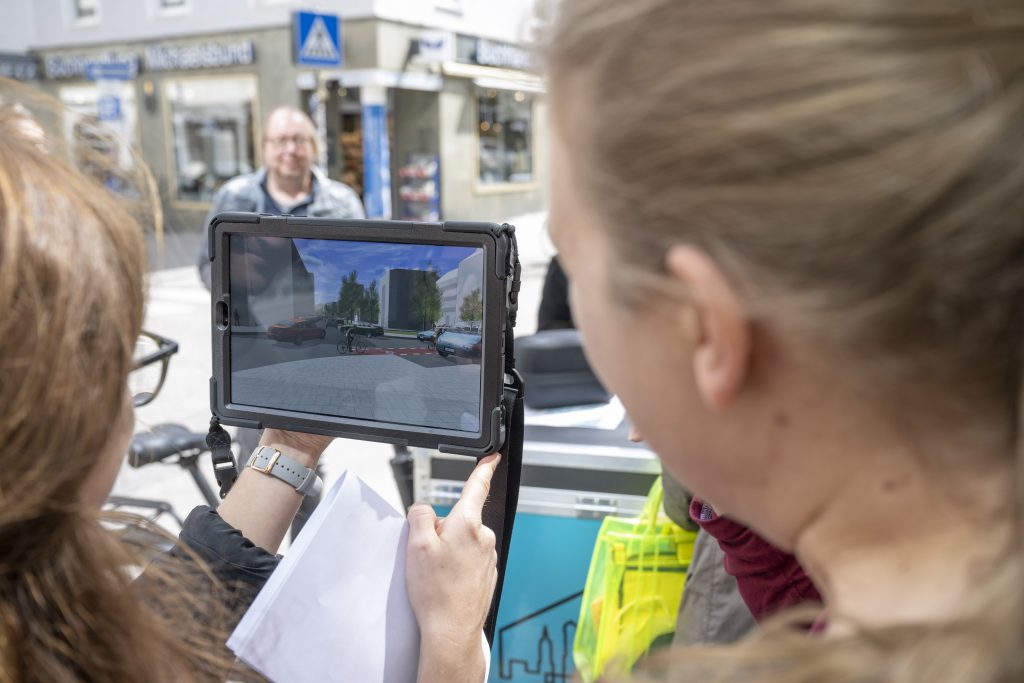
Use of a 3D visualization during an urban walk to engage citizens in shaping the open space concept for the “City Center Focus Area – Vision Boulevard Sonnenstraße and Herzog-Wilhelm Park.”(source: City of Munich)
The project’s strength lies in its partnerships – with the Technical University of Munich’s Chair of Geoinformatics, as well as pan-European collaborations like EuroCities, NetZero Cities, and the Connected Urban Twins initiative with Hamburg and Leipzig. Together, these efforts contributed to the development of a DIN standard for digital twins in German municipalities.
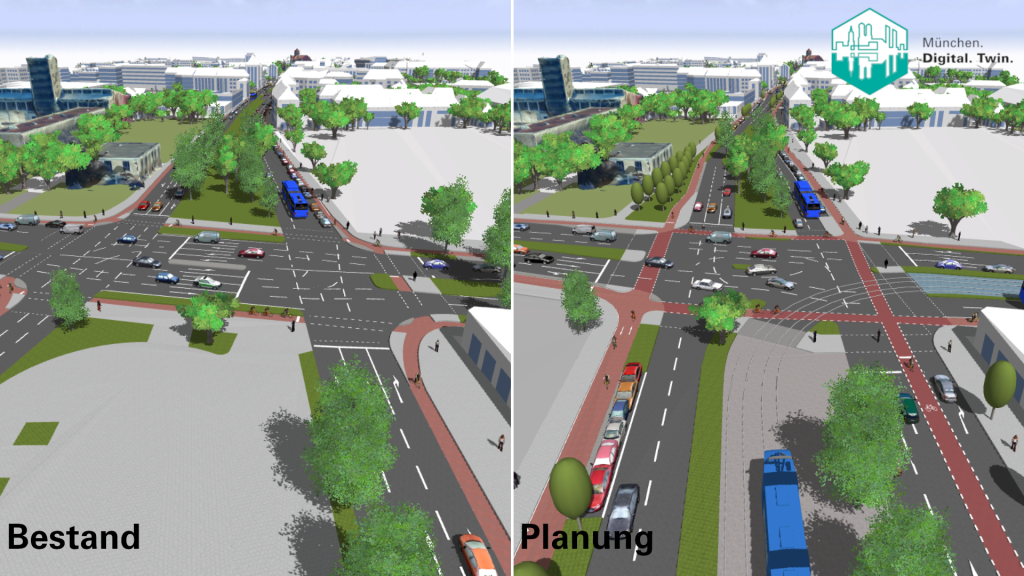
A visualization of planned upgrades on Boschetsrieder Straße in Munich, including protected bike lanes, a tram line, and increased greenery (right). (source: City of Munich)
From Data to Decisions: Building the Infrastructure
The backbone of this initiative is a unified data framework: over 20,000 reference points across the city ensure all geospatial data aligns within a single system. Drones, GPS backpacks, and AIpowered image recognition verify the quality and accuracy of the data, enhancing trust and precision in planning processes.
Rather than attempting a city-wide implementation all at once, Munich applies a quarter-based strategy. A key example is the ASCEND project, an EU-funded initiative in North Munich aiming to develop Positive Clean Energy Districts. The findings from each district guide further applications citywide, accelerating the pace while ensuring localized relevance. Empowering Citizens Through Visualization One of the most powerful impacts of the digital twin is its ability to make planning visible and understandable. Through 3D models, Munich’s mobility department successfully engaged citizens around controversial cycling infrastructure projects. What was once met with skepticism turned into support, thanks to clear communication and visual storytelling.
Open Standards, Open Source, and Data Sovereignty
Crucially, Munich has avoided vendor lock-in by relying on open standards and open-source
technologies. This not only ensures data sovereignty but also makes the platform more flexible,
fundable, and scalable in line with EU sustainability goals.
Lessons for Other Cities
“What advice would Munich give to cities wanting to follow its lead?”
• Start with use cases not data collection.
• Co-create with departments to identify real needs.
• Partner closely with academia and startups.
• Embrace open technologies for long-term independence.
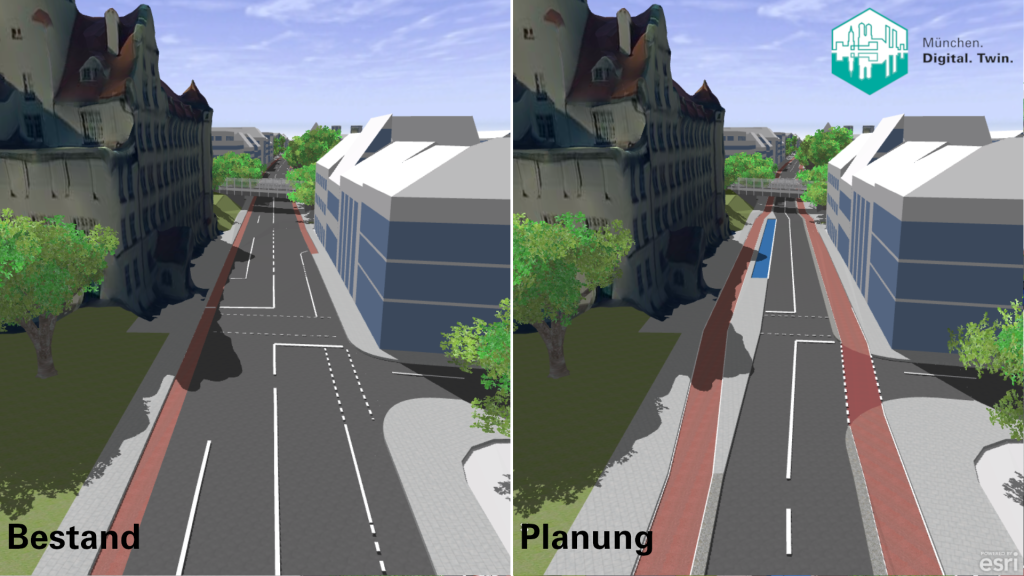
WebViewer interface showing a comparison between the current state and the planned improvements for the Boschetsrieder Straße bicycle infrastructure, based on the Munich City Council’s decision. (source: City of Munich)
A More Human Future
As someone who researches urban emotions and citizen engagement, I was particularly inspired by Munich’s approach. Their digital twin is not just a tool it’s a shift in culture. It shows that when cities communicate better, they build better. And that’s a lesson all of Europe and the world- can learn from.
References:
Bernard Marr. (2022). The best examples of digital twins everyone should know about. [online]
Available at: https://bernardmarr.com/the-best-examples-of-digital-twins-everyone-should-knowabout/
[Accessed 18 Mar. 2025].
BizzTech. (2025). What is BizzTech? [online] Available at: https://bizztech.io/what/ [Accessed 22
Mar. 2025].
BizTech Magazine. (2025). The industrial metaverse is transforming EU industry. [online] Available
at: https://biztechmagazine.com/article/2025/01/industrial-metaverse-transforming-eu-industry
[Accessed 21 Mar. 2025].
European Commission. (2024). Digital twins – Lessons learned from the City of Aachen. [online]
Urban Mobility Observatory. Available at: https://urban-mobilityobservatory.
transport.ec.europa.eu/resources/case-studies/digital-twins-lessons-learned-cityaachen_
en [Accessed 15 Mar. 2025].
LeewayHertz. (n.d.). Digital twin and metaverse development. [online] Available at: https://
www.leewayhertz.com/digital-twin-and-metaverse/ [Accessed 12 Mar. 2025].

